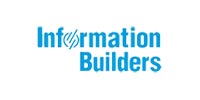Requirements analysis
Requirements analysis is one of the most important methods in project management. It can be used to document all requirements - functional requirements as well as requirements relating to the backend and the system landscape. At the same time, the project team benefits from comprehensive documentation and a shared understanding that allows the project to be turned into reality.
It is undoubtedly one of the essential tools in software development: the requirements analysis deals with the client's ideas regarding the software to be developed, checks their feasibility and summarizes them in the form of a (digital) specification sheet.Project success through professional requirements analysis. The advantages:
✔ Project results correspond to the actual requirements
✔ Analysis creates a common understanding
✔ Focuses on relevant features and functions
✔ Requirements analyses make success measurable
✔ Project risks are reduced while project costs remain calculable.
Requirements analysis: What is it actually?
Requirements analysis is a method used to lay the foundations for cooperation between management and the project team. The result is usually a series of documents that record all the requirements for the project.
This form of analysis distinguishes between different forms of functionality. For example, it contains information on the functionalities required by the users. In addition, the documentation informs the developers about what legally compliant data storage is required or what the structure for deleting personal content should look like. The level of detail and documentation of exact technical details therefore requires an expert.
Regardless of what type of functionality is documented, each requirement must fulfill three key characteristics:
- The wording must be simple and unambiguous
- Feasibility must be ensured
- The requirements must be verifiable
This ensures that the requirements analysis creates a common understanding between project sponsors, stakeholders and team members.
Components of the requirements analysis
The result of the analysis serves as an important tool for the various project parties to work efficiently and purposefully. With the help of such an analysis, it is much easier to keep an eye on time and costs. In addition, a common understanding helps to ensure that the result meets the expectations of all parties involved. To meet these requirements, the requirements analysis can include the following documents:
- The requirements elicitation, which is usually defined in a joint workshop
- The requirements specification, which is derived from the requirements elicitation
- The requirements description, which fills the specifications with life and details
- Classification and evaluation to define, categorize and prioritize tasks
By the way: In the case of requirements, a distinction is made between functional and non-functional requirements. Functional requirements are those that form the heart of the software and are used by the users. Non-functional requirements, on the other hand, cannot be perceived directly. This category includes, for example, quality requirements such as stability, performance and other framework conditions.
Requirements analysis and project management
Analyzing and documenting the requirements is one of the most important tasks in the project. The results form the foundation on which the subsequent development is built. This aspect of software development is therefore part of project management and takes place before the actual start of the project.
Those responsible usually decide to record the requirements in an initial workshop. Here, all those involved can express their expectations and find out whether their own ideas can be implemented. Ideally, the result is a document that proves to be a reliable companion for project management.
Good to know: Changes that arise later in the course of a project are significantly more time-consuming and therefore more expensive to implement than those that were defined at the beginning. There are repeated examples of how such later adjustments can cause entire projects to fail. With a comprehensive and targeted analysis, it is possible to avoid this problem.
Requirements analysis in software development
The analysis of requirements is an important building block for successful software development. After all, the better the requirements are defined, analyzed and documented, the more effectively the agile team can work. After all, such an approach means that numerous problems and ambiguities are eliminated in advance.
Despite this preliminary work, the desired dynamic is maintained in agile development. This is not least due to the fact that small changes or additions can be easily integrated into the development process. The prior analysis of the requirements therefore does not rule out later adaptation or expansion. Nevertheless, it helps the team to keep an eye on the goal and the available time window.
Requirements analysis process
The exact process of the analysis can vary depending on the project, industry or company. Organizations such as CMMI, IEEE, IIBA or IREB therefore define different approaches to how requirements analysis can be implemented. In general terms, the process comprises the following measures:
- Existing functions of legacy systems are checked for their added value and their current validity
- New requirements are collected
- The team checks and analyzes the collected requirements
- This is followed by the coordination and organization of all relevant contents of the analysis
- The requirements are implemented step by step by the project team
It is important that there is no single person who carries out the analysis alone. Ideally, it is the effort of an entire group. It is best if all project participants identify and record the requirements in a joint workshop. However, elements such as case studies or questionnaires can provide the basis for opening discussions. Although it is often advisable to choose a small number of participants for meetings, a large group has its advantages in this scenario:
- Any ambiguities can be clarified immediately on the spot with all project participants
- The joint workshop increases acceptance and creates a feeling of togetherness among the participants
- The participants have the feeling that their interests are being taken into account
- The documented basis was devised jointly, which is why different perspectives are incorporated
These methods can be used to identify the requirements
There are various research methods for identifying the existing requirements. Which of them are suitable depends on the company, the project in question and the current state of knowledge. Regardless of the method chosen, however, the research effort should be kept within reasonable limits. The following methods are regularly used in requirements analysis:
Case studies: These examples of different scenarios help to capture project requirements in detail. They can be used to collect representative data that can form the basis for requirements analysis. The aim here is, for example, to identify, document and test user behavior. Ultimately, case studies form the basis for creating a reliable strategic plan.
Questionnaires: Questionnaires can be used to identify current requirements. They cover all aspects of the project and should be aimed at people with different backgrounds. However, it is often the case that respondents do not take enough time to answer them. A subsequent interview may therefore be necessary.
Mind mapping: Mind mapping is another reliable method for identifying existing requirements. As a visual form of brainstorming, it focuses on listing the rough concept or general features and functions. Detailed project requirements can also be captured with mind mapping, but usually require a second or third pass.
Prototypes: Prototyping can be helpful as a visualization of possible project outcomes. The reason for this is that many people find it difficult to imagine unknown scenarios. A prototype therefore offers an initial potential result on which further considerations such as mind mapping can be based.
Use cases: Use cases are a central element of project planning and help to implement specific features in the project. Combined with personas, they can be used as an essential part of the analyses. This is because the use case focuses on exact processes within a previously defined framework. Both people and systems can represent the actuators. In this way, all the necessary requirements can be determined step by step.
Which methods are ultimately used depends on numerous factors. But regardless of this, the determination should always produce complete, clear and comprehensible results. It is also important to document the individual functionalities atomically and uniformly. This ensures that they remain comprehensible and clear and can be checked and tracked in the further course of development.
Conclusion
A well thought-out requirements analysis increases the chances of success for software projects. It ensures that the project team knows the requirements and can implement them accordingly. At the same time, prior analysis ensures that the system architecture matches the actual requirements and that important features are not forgotten. It also creates a common understanding for everyone involved. This makes requirements analysis an important tool for project management.












